Vertigo editor Angela was lucky enough to speak to one of her absolute favourite tattoo artists, Sydney-based Mish Bae (@mishbae). Known for her stunningly-detailed black and grey designs, Mish graduated from UTS in 2018 with a degree in Visual Communication. She now works at Le Jardin de Zihwa, in their Sydney studio, where Angela has every intention of visiting one day to be tattooed.
AJ: I remember reading about your career trajectory one day on your Instagram stories, and I found it so interesting and inspiring. Can you explain to our readers what the last few years of your life have looked like and how you ended up where you are today?
MB: I’ve always enjoyed drawing and I knew that I wanted to pursue a career that involved drawing in some way. During my first few years of study, I juggled freelance illustration work, a part-time design job, and hopping between different cafes and restaurants as waitstaff. In my final year of university, I studied part-time and started a new full-time job at a creative agency as a mid-weight designer. Even though everything felt like it was settling into place as I approached the end of my degree, I felt depleted not being able to do what I loved most for work: draw.
Becoming a tattoo artist has always been my response to ‘If you could do anything as a job, what would you do?’. After a few months of working full-time at the design agency, I saw on Instagram that one of my favourite tattoo artists, Zihwa (@zihwa_tattooer), was looking for an apprentice to join her at her new Sydney studio. I immediately jumped on my laptop and sent in my portfolio without a second thought. I knew it was an opportunity I couldn’t miss.
Coming from a strict family, I’d subconsciously implanted into my mind that being a tattoo artist was out of reach. This all changed when my apprenticeship application was accepted. I came to a realisation that nothing is impossible, you just need the strength to be able to take a step out of your comfort zone. Once you do this, the possibilities are endless. It’s been around two years since I started as an apprentice, and I always try to continue growing as a tattoo artist.
AJ: What did you want to be when you were little? Would younger Mish be surprised to know that you’re a tattoo artist?
MB: I wanted to be everything when I was young. I dreamt of being an artist, pianist, animator, policewoman, soldier, and mad scientist among many other things. I still constantly want to try new hobbies. I’d like to say it’s a strength of mine, although it does sometimes mean I don’t have enough time in a day to do everything I want to. If I told my younger self that I’d become a tattoo artist, I think I would be in disbelief; at the same time, I’d be extremely excited. Gifting permanent art to someone just seems so surreal, don’t you think?
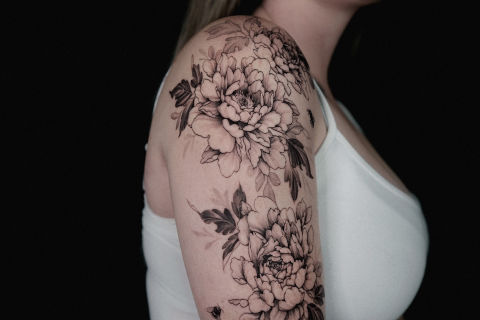
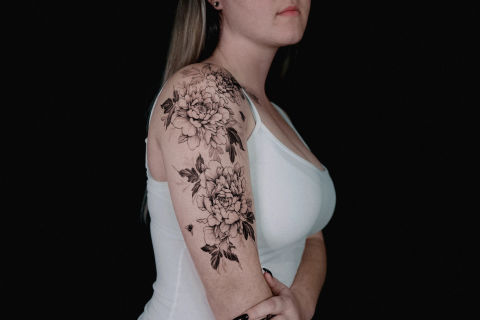
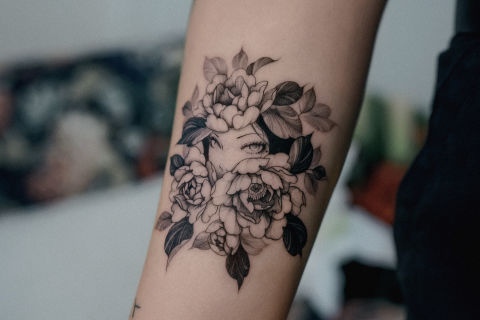
AJ: What have you been able to bring from your VisCom degree to your tattoo artistry and job?
MB: Despite VisCom being quite different to what you’d expect from the tattoo industry, I was surprisingly able to apply many of the skills I’d learnt from my degree to tattooing. An obvious example is the Illustration and Animation electives I studied; they helped me focus on drawing and developing my own art style. A big part of being a tattoo artist, especially in this current age of the internet and social media, is creating an identity and a brand for yourself. By having a background in VisCom, I could apply that knowledge and experience to build my online presence as a tattoo artist. I’m currently working on designing business cards and other promotional materials such as postcards, prints, a website, and so on. I wouldn’t have the skills and knowledge to undertake these side projects without my VisCom degree and previous work experiences.
AJ: What was the hardest thing about transitioning from designing at an agency to designing tattoos and tattooing?
MB: The first year was the most difficult; shifting from a decently paid and stable desk job to a full-time unpaid apprenticeship in an unfamiliar field was not an easy task.
I learnt that it would take immense responsibility and dedication in order to have a career as a tattoo artist. To pursue something with no pay initially is difficult and almost impossible — you need passion and willpower to persevere. As a tattoo artist, your work directly represents your career, similar to an artist or a musician. You also create your work for an individual rather than a company. You’re giving a permanent piece of art to a person, something that will live on with them and become a part of who they are. It is extremely personal and I hold immense responsibility for the quality of work that I present.
AJ: How do client expectations differ as a graphic designer compared to a tattoo artist?
MB: The intent, purpose, and the level of personal trust is what I believe makes the biggest difference. From my experience as a graphic designer, I felt that I had to mould myself in line with my client. The purpose of the work I created was vastly different from that of a tattoo artist.
My tattoo clients come to me as they resonate with my art style. I feel as though I can express my creativity more freely since this is what draws clients to my work. I’m extremely lucky to have amazing clients who respect and trust me and my art, and many have even given me complete freedom to design whatever I want on them, for which I am extremely grateful.
AJ: Do you prefer drawing custom designs or flash?
MB: Custom designs for sure! Most of my tattoos are custom-designed and unique to each client. A custom tattoo gives me the flexibility to design a tattoo best suited to the individual, especially as everyone has different skin types and bodies, as well as unique ideas they want portrayed. On the other hand, flash designs give me more freedom as the tattoos are pre-drawn. I guess custom designs can be seen as an artist adapting to the client’s ideas in their own style, and flash designs as the client catering to the ideas put forward by the artist. This doesn’t mean that custom designs don’t provide creative flexibility, it depends case by case!
AJ: Your coworker, Goyo (@goyotattooart), started her tattooing journey in Korea, just like Zihwa. Can you explain to Vertigo readers what the tattoo industry looks like in Korea? How would a tattoo artist’s experience differ there, compared to Australia?
MB: Prior to my apprenticeship, I had no clue that tattooing is basically illegal in Korea. To be able to legally tattoo in Korea, you are required to hold a medical licence, which means most of the tattoo studios there are run illegally underground.
The flagship studio is located in Korea and although I haven’t yet visited, I know of the industry and the experiences of tattoo artists in Korea through my coworkers and mentor. Compared to Australia, Korea is much more conservative, especially when it comes to the public’s view on tattoos and tattoo artists. Many still view tattoo artists as criminals, and people with tattoos as disruptive and anti-social. Because of this, the tattoo scene in Korea is very tense; the shop address needs to be kept hidden and artists need to be careful with who they accept as clients. To pursue your career as a tattoo artist in Korea means that you are putting yourself at risk.
AJ: Given this preconceived notion of tattoos and tattoo artists — and you mentioned earlier that your upbringing was quite strict — was your family supportive of your career change?
MB: My family is quite conservative and religious. When I told them I had decided to quit my graphic design job to pursue an unpaid tattoo apprenticeship, my mum was especially shocked and extremely against it. Tattoos still carry a negative connotation for many of the older generations and it was quite difficult for them, especially when I first started my apprenticeship. Over the years, they’ve slowly started to become more accepting of it, they can see how passionate I am in what I do. I found that the best way is not to try to convince them with words, but to show them through action. Tattoos to me are a special medium of art, and beautiful in the way that’s so personal and expressive. I want to deliver this message to not just my family but also to the world.
The tattoo industry has developed through the years from many different cultures and backgrounds. I am a part of a new generation of artists, and one of my biggest goals is to change the negative perception of tattoos. I want my work to shine light on tattooing as a positive medium for art and self expression.
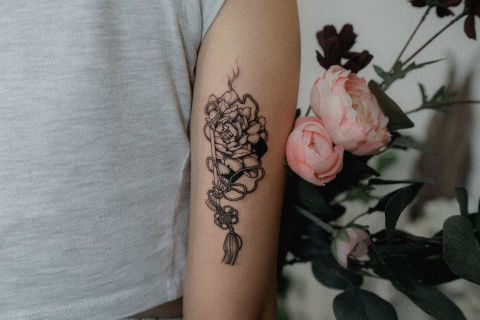
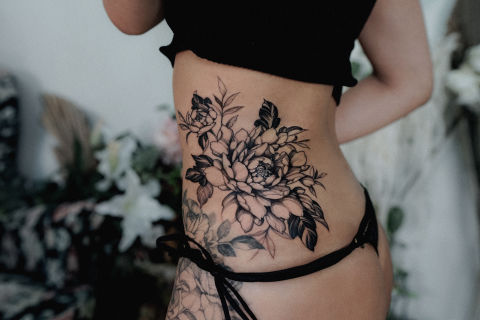
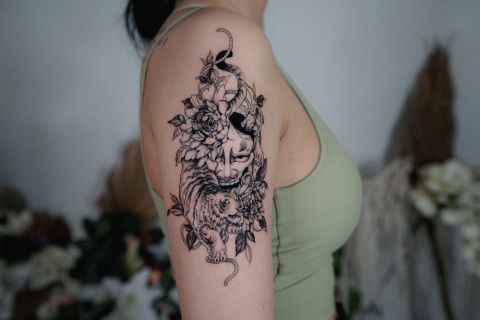
AJ: The creation of Instagram has changed the way that tattoo artists and their portfolios can be discovered and accessed by clients. Yet, online creators are constantly harmed when the platform tries to update their policies on semi-nudity and women’s bodies. Have you or people you know in the tattoo community been negatively impacted by Instagram censorship? What is the best way for people to help online creators and small businesses?
MB: I have not personally been affected but many of my tattoo artist friends have had negative experiences with Instagram censorship. A few of my co-workers’ Instagram accounts have been banned or have received warnings accusing them of sharing inappropriate content. Tattoos are art on skin and the body is inherently a big part of its medium. Showcasing tattoo art subsequently means featuring the body, and it’s pushed some to criticise it as too sexual for social media.
As a tattoo artist, I have to be careful of what I share. I know that it isn’t realistic to be completely accepted by everyone on social media, but I don’t want to limit myself from sharing my creativity and the work that I am proud of. People can help online creators and small businesses by being more aware and conscious of these issues. It happens more frequently than you’d realise.
AJ: Have you considered using other online platforms to engage with clients and fans?
MB: I have, and I think it is important to do so. My main platform is Instagram, since it’s where I started, but after seeing the extent of censorship experienced by tattoo artists, I don’t think it is safe to rely on just a single platform. I haven’t experimented much with it yet, but once I get back to work after the lockdown, I want to try exploring and creating more video content. Video-based social media is on the rise and being able to adapt is crucial in this day and age. Filming the tattoo process also brings a closer insight into the work that I do, which I think would be very interesting to share.
AJ: How do you see your art style developing?
MB: I’m constantly experimenting and pushing to develop my art. I currently specialise in fine line blackwork and I plan to further strengthen my techniques. I would love to do more larger pieces such as full back, arm and leg sleeves. A larger size means that I’m able to utilise the shape and form of the body, as well as incorporate more details which would not be viable in smaller pieces.
Since skin is alive and constantly changing through one’s life, the tattoo will also inevitably change. A great tattoo artist designs tattoos not just for how it will initially look, but also for how it will look and age over the years. I want to constantly be learning and improving, it’s something that I continue to keep in mind and strive for as I grow as a tattoo artist.
AJ: You have quite an international following. What cities would you most like to visit and do guest work in?
MB: Too many places! Firstly, I want to visit Korea and the Le Jardin de Zihwa studio in Seoul. I have yet to meet some of the tattoo artists at our main studio. Also Auckland, Vancouver, Paris, New York, LA and... honestly, I just want to travel everywhere I can get an opportunity to guest work. I visited Madrid a few years ago and I had so much fun meeting new tattoo artists and clients from a different country. It was such a memorable experience and I’m excited to do it again in the future.
AJ: What has been the most rewarding moment of tattooing?
MB: The most rewarding moment is seeing my design tattooed on my clients’ skin at the end of the session and how happy it makes them. I’ve had clients tell me that they have developed more confidence and self-esteem after receiving their tattoo. The positive impact my art has on a person is the most rewarding part of my job. Getting a tattoo is a big decision and commitment for most people. Being a part of such a significant process in someone else’s life makes me humble and appreciative of what I do.
AJ: If any of our readers are interested in finding more examples of your work (or if they want to book a session with you!), where can they find you?
MB: You can find me on Instagram @mishbae and Facebook @mishbaetattoo! You can also follow @lejardindezihwa for works by the talented artists in both the Sydney and Korea studio.

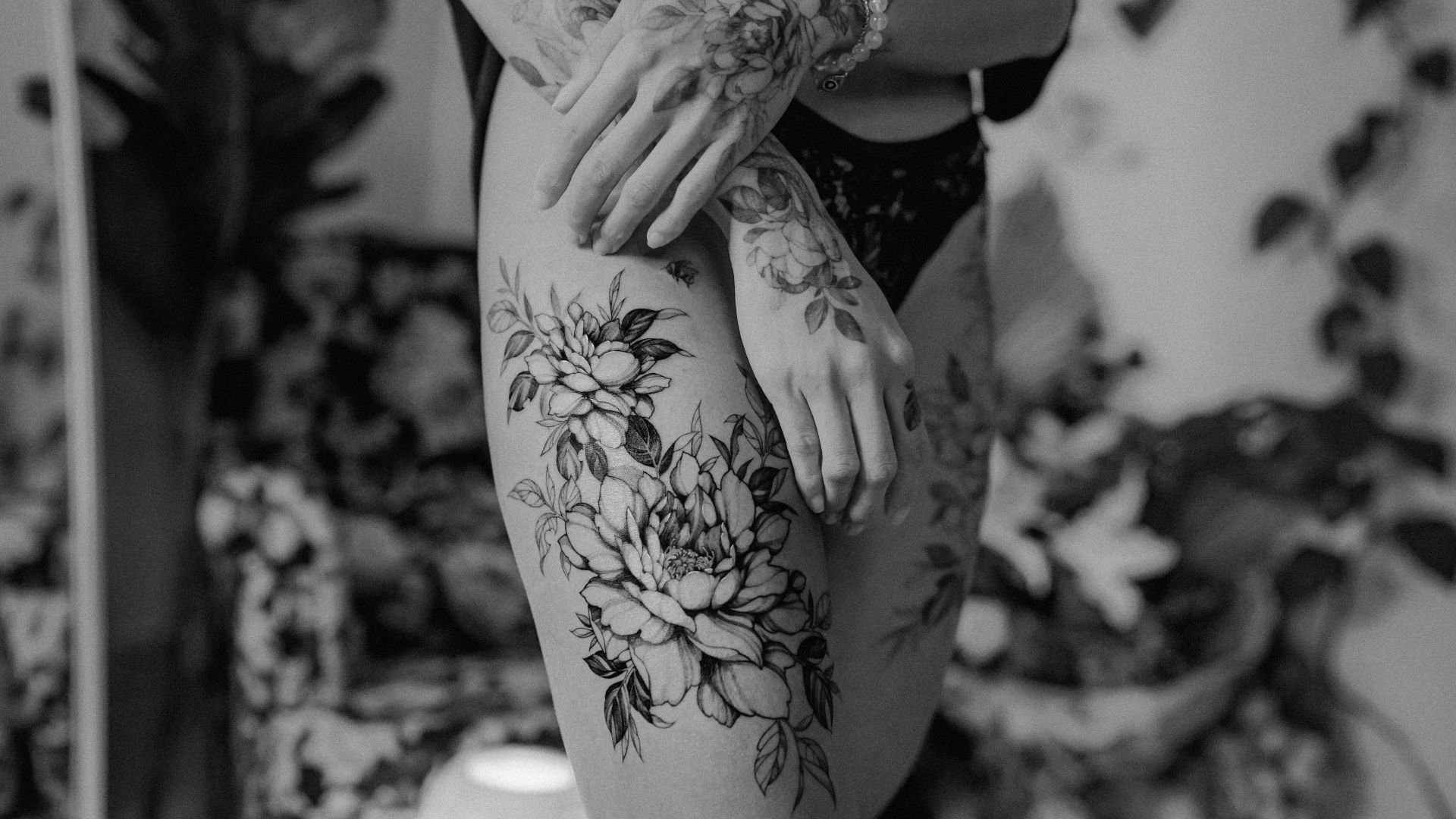
 -
-